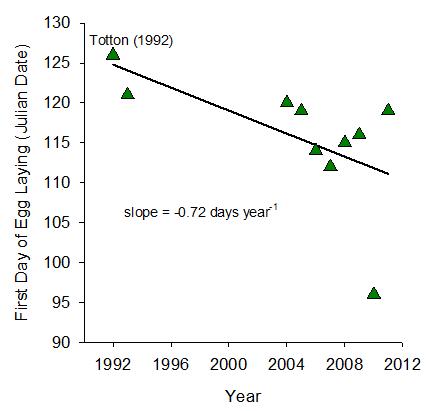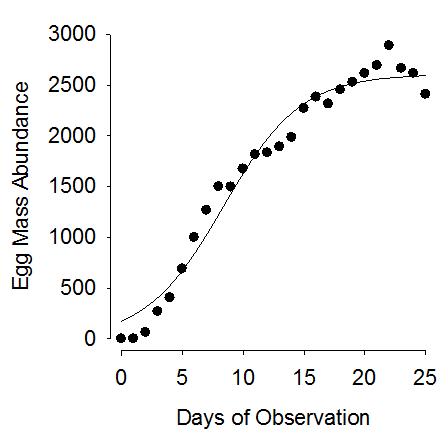Amphibian ecology and environmental change
Project start
1990s, intermittent in 2000s
2008 onward
About the Project
The Spotted salamander (Ambystoma maculatum) has a well established breeding population at Bat Lake, and for 2-4 weeks every spring male and female salamanders can be readily observed entering and leaving the lake, depositing over one thousand egg masses.
Until recently, observations of salamander abundance at Bat Lake have been primarily anecdotal, with no long-term records. The primary purpose of this research is to collect information on relative abundance of spotted salamanders at Bat Lake, with the aim of assessing climatic influences on a natural amphibian population.
Given that salamanders typically breed in temporary water bodies, long-term assessments of the health and fluctuations in populations is made difficult due to the potential for habitats to disappear from year to year. Bat Lake, however, is a permanent water body, devoid of fish predators, and thus serves as a stable reference source for monitoring the effects of environmental change on salamander populations.
We have amassed information since 1992, demonstrating that the first egg laying date of the season has shifted earlier in the season at an average rate of about 0.88 days/year. This first egg lay date is also correlated strongly with yearly variation in spring temperatures (expressed as the number of days in April above 0°C); thus changes in local climate are the likely driver for alteration in reproductive timing in these early spring breeding amphibians. For more information click here.
This project will become another long-term monitoring project operating out of the AWRS, and will enhance our understanding of salamander breeding phenology. Our anticipation is that our yearly egg mass counts, sex ratio data, trap capture numbers, and morphological data on salamander size will provide us with a complete picture of the health and status of these lesser known amphibians of Algonquin Park.



